An application is a software program that gives you an interface to interact with your system or perform any specific tasks in just a click of a button. Whenever we start using any operating system, we first always look for the best applications that can fulfill our demands.
Though with the advent of the Internet we can do almost everything using web applications running in a single web browser app, some of you also want desktop apps to have a better comfort with one less browser tab. Hence, in this article, I’ll present a list of best Linux apps that you must have installed on your Linux operating system.
Whether you want the best Ubuntu apps or apps for Chromebooks, the list fully contains free and open source applications that you can easily install on any Linux distro.
You can use these free and open-source software (FOSS) every day for your personal productivity, entertainment, or professional work. You can also modify them to add new features by contributing to its open repository.
So, let’s take a look at the list of best apps for Linux that are free to use and easy to install on any Linux distros.
10 Best Free And Open Source Linux Applications
- Liferea
- Fragments
- GNOME Boxes
- Krita
- Podcasts
- Calibre
- Visual Studio Code
- Stacer
- KTouch
- Déjà Dup Backup Tool
1. Liferea — Feed Reader
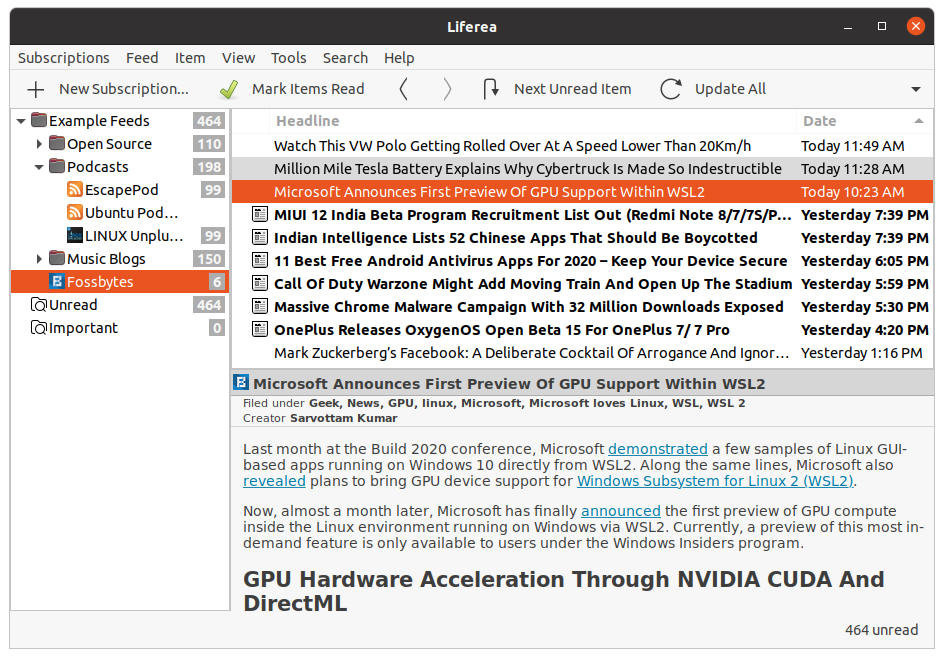
Liferea is a Linux feed reader that allows you to retrieve all the latest articles or news from several websites in one place. Liferea is a free and open-source RSS client or news aggregator specially designed for Linux-based operating systems.
Features of Liferea:
- Embedded web browser
- Offline article read
- News bins to save headlines permanently
- Import and export subscriptions
- Play Podcasts
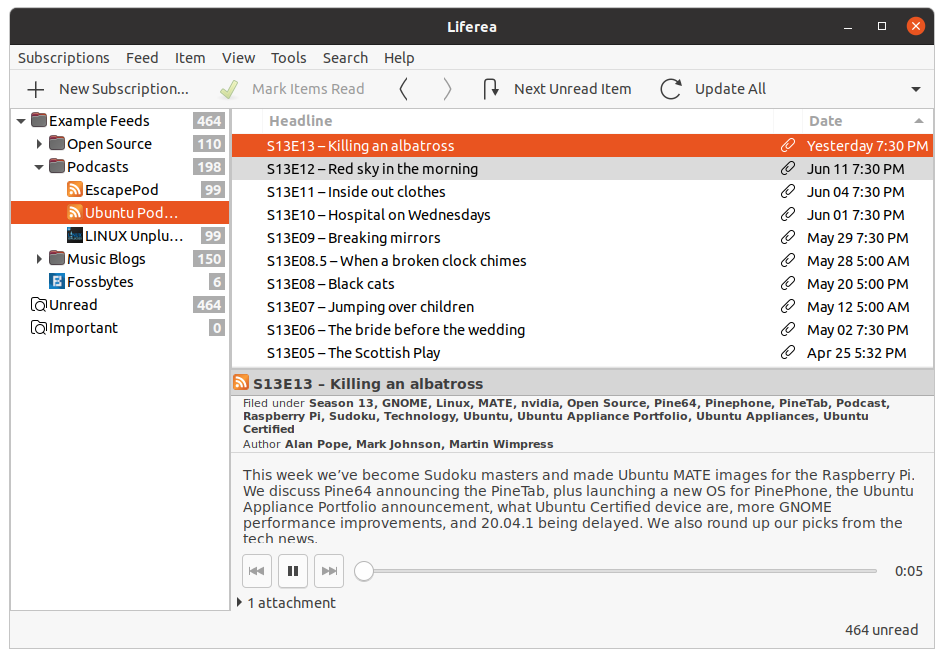
You can also create collections of your favorite feeds or put the same category of feeds in one folder. Besides reading articles, you can also subscribe to podcasts channel, download, and play it directly into Liferea.
Liferea alternatives at a glance:
- Feeds
- FeedReader
- Akregator
How To Install Liferea?
Most Linux distros already have Liferea in their repositories, for instance Debian, Ubuntu, Red Hat, Gentoo, SUSE, and Linux Mint. Hence, you can directly install it using the default package manager.
For Debian, Ubuntu, Mint:
apt-get install liferea
For Red Hat, CentOS, Fedora:
yum install liferea
You can also use the Ubuntu Snap tool to get Liferea snap packages from Snapcraft. Major Linux distros already support and pre-install Snap. If your system doesn’t have Snap, refer here to set it up and then run:
sudo snap install liferea
Note: For Linux Mint 20, Snap support has been dropped. To enable and use Snap, read here.
2. Fragments — A BitTorrent Client
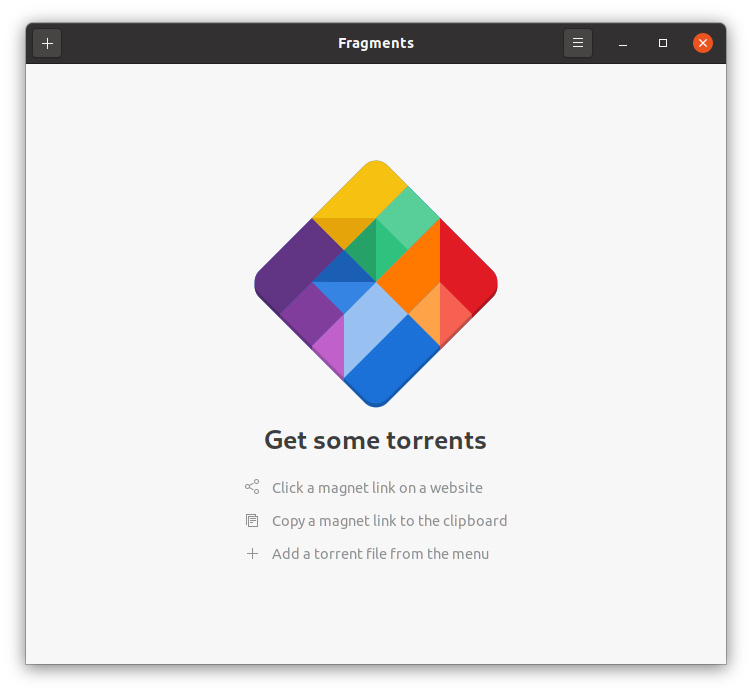
Fragments is one of the simplest, distraction-free, and easiest-to-use GTK3-based BitTorrent clients for the GNOME desktop environment. You can also use it on other Linux desktops to download huge files, like videos or installation images using a torrent file.
Features of Fragments:
- Free and open source
- Modern and simple user interface
- Lightweight and fast
- Pause and resume
- Torrent file or magnetic link
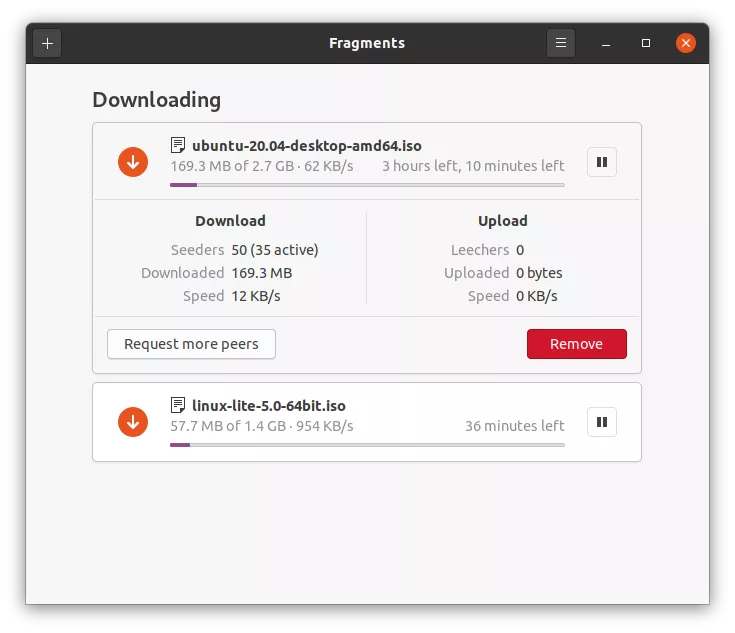
Whenever you click on the magnetic link on the website, it directly opens into Fragments and starts downloading the files. Even after you close the Fragments app and open it again, currently download file resumes from where it was left.
Fragments alternatives at a glance:
- Deluge
- Transmission
- Ktorrent
How To Install Fragments?
If you can’t find Fragments in the default repository of your Linux distros, you can download install it from Flathub.
Most Linux distros like Linux Mint come with Flatpak set up by default. If your Linux distro doesn’t have Flatpak, install it by following our beginner’s guide to Flatpak. Once you have Flatpak, install Fragments by running the command:
flatpak install flathub de.haeckerfelix.Fragments
However, you can also install it using the graphical method via the software center of your distro integrated to Flathub.
3. GNOME Boxes — Virtual Machine Solution
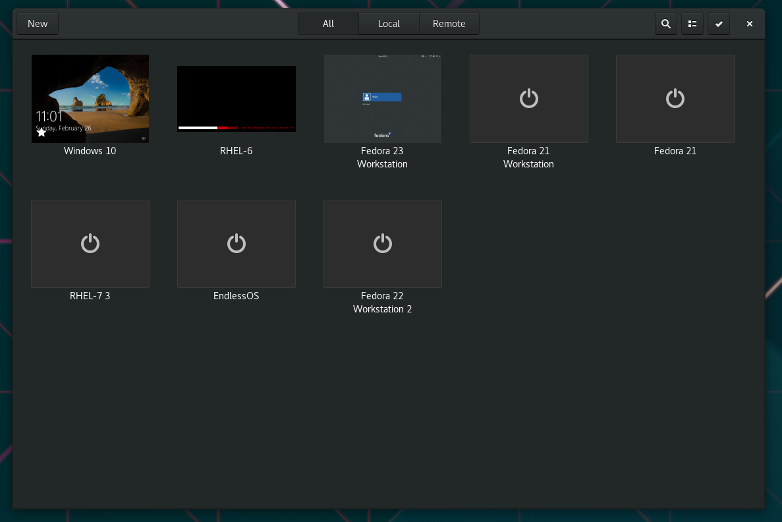
GNOME Boxes is a simple alternative to VirtualBox that allows you to create virtual machines (VM) for development, experiment, and learning tasks. Along with virtualization, Boxes also let you access and manage your remote operating system using VNC, RDP, or SSH protocol.
Features of Boxes:
- Simple virtualization
- Remote computer access
- ISO images available to download
- Easy steps to customize and create VM
- Built-in screenshot function
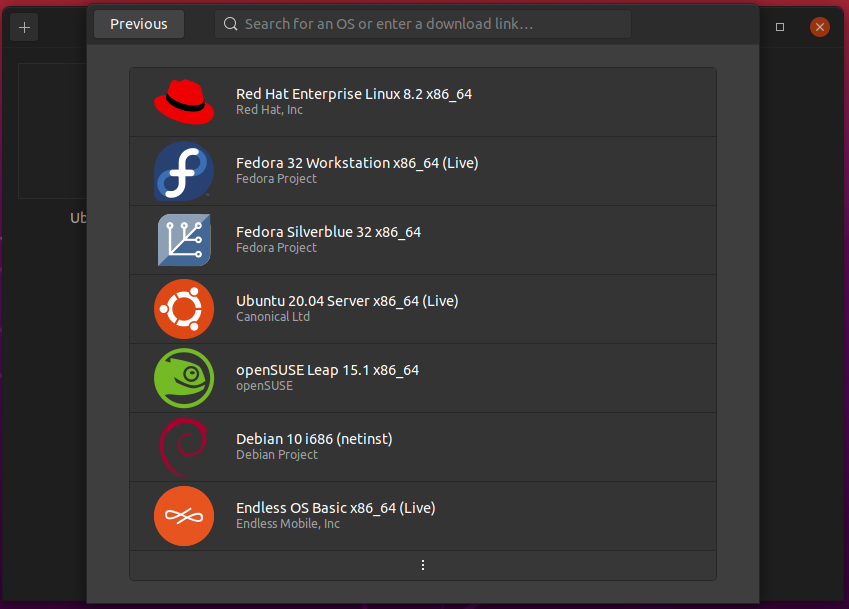
The best part of Boxes is the availability for popular Linux distros. Without visiting the official site to download the ISO image, you can download, install, and run any Linux distros directly from the BOXES app.
GNOME Boxes alternatives at a glance:
- VirtualBox
- QEMU
- VMWare
How To Install Boxes?
GNOME Boxes is available on Flathub to download and install using Flatpak. Run the command to install Boxes:
flatpak install flathub org.gnome.Boxes
4. Krita — A Digital Painting App
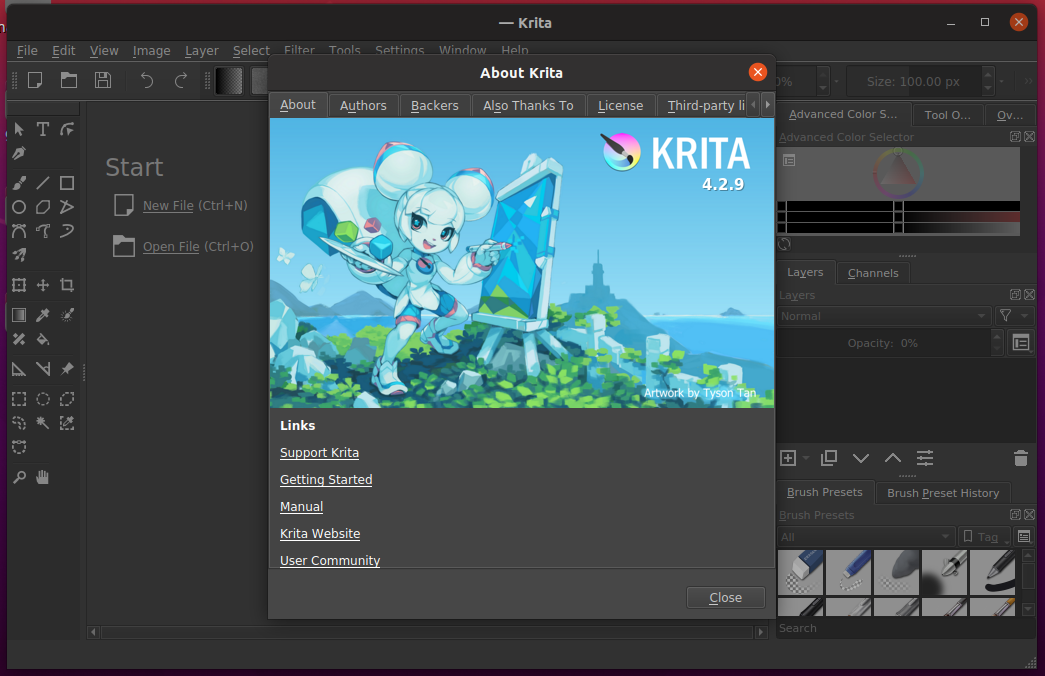
Krita is a professional and fully-featured digital art studio for creating concept art, comics, textures for rendering, and matte paintings. If you’re an artist looking for one of the best Linux apps for painting, you should go for Krita. With the latest Krita 4.3 release, it advances to offer more new features such as animation tools, watercolor brush, filters, and other tools.
Features of Krita:
- No trials or subscription
- PSD and HDR support
- OpenGL – Canvas Graphics acceleration
- Color palette docker
- Audio for animation
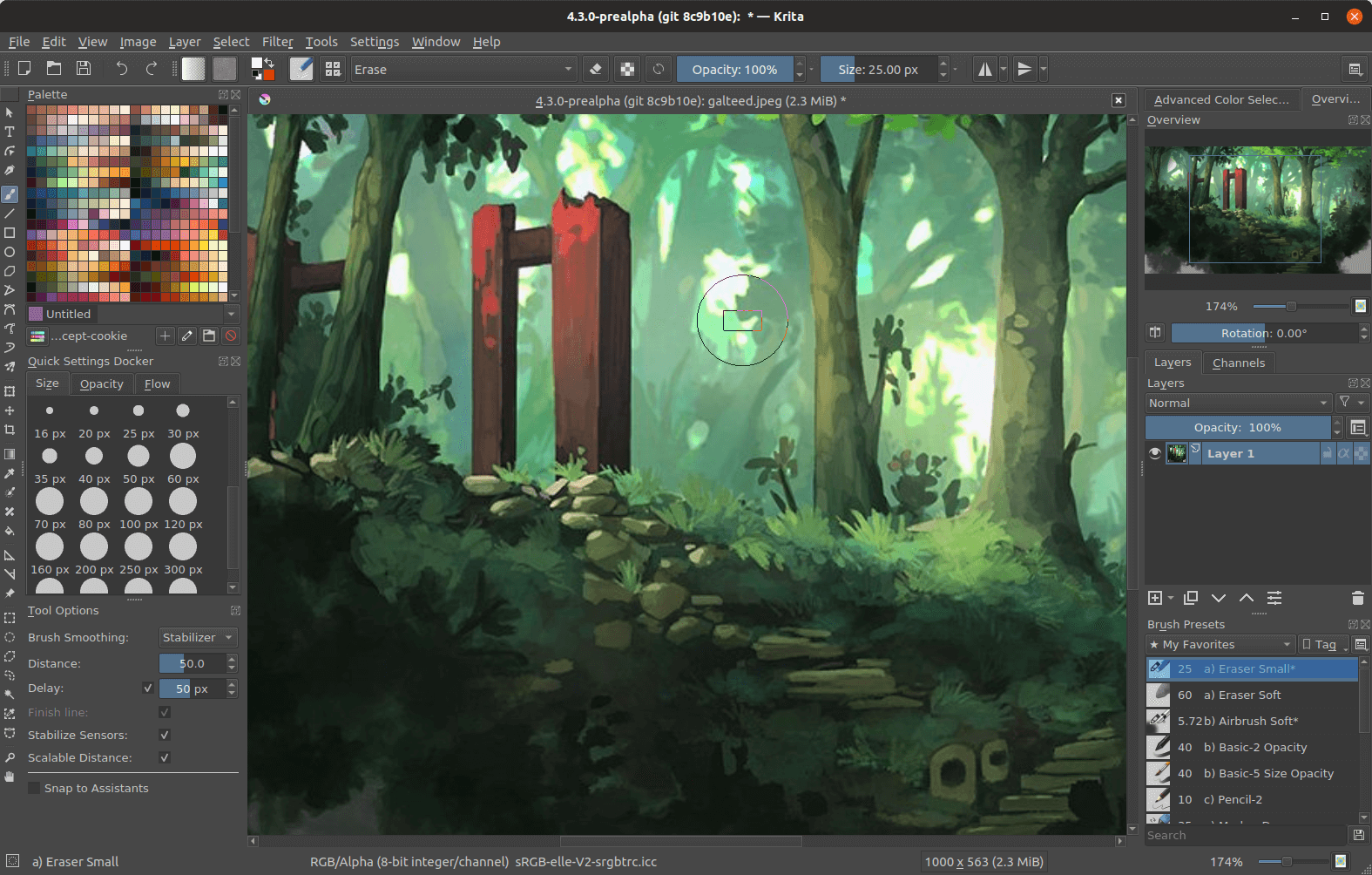
If you’re a terminal enthusiast, you can also use Krita to do several operations on images without opening it. For instance, you can mass convert KRA files into PNGs and PNGs to other file formats.
Krita alternatives at a glance:
- MyPaint
- Sketchbook
- Inkscape
How To Install Krita?
Krita is available in both the Snap store and Flathub, which you can install using either the universal packaging system Snap or Flatpak.
flatpak install flathub org.kde.krita
or
sudo snap install krita
Moreover, you can also go for the easiest method i.e. AppImage. You can download the AppImage file of Krita from the official site here. Then, give the executable permission and just click on an app to use Krita without installing it.
5. Podcasts — GNOME Podcast Client

If you’re fond of listening to digital audio with no distraction of ads, Podcasts is a must-have simple app for you. Podcasts is a native GTK app for Linux users that let them listen to their favorite podcast channel. Unlike Liferea, Podcasts is a standalone feed aggregator that only allow subscribing to podcast shows.
Features of Podcasts:
- Simple and easy-to-use user interface
- Lightweight and fast
- Import and export subscribed shows
- Download to listen offline

To subscribe to shows, you only need to get RSS feed address of your show and just enter it into the input field. Once you add the shows, you will get the latest episodes as soon as they’re available.
Podcasts alternatives at a glance:
- CPod
- Winds
- Spotify
How To Install Podcasts?
Podcasts app is hosted on the Flathub repository which you can install using Flatpak.
flatpak install flathub org.gnome.Podcasts
6. Calibre — E-book Manager
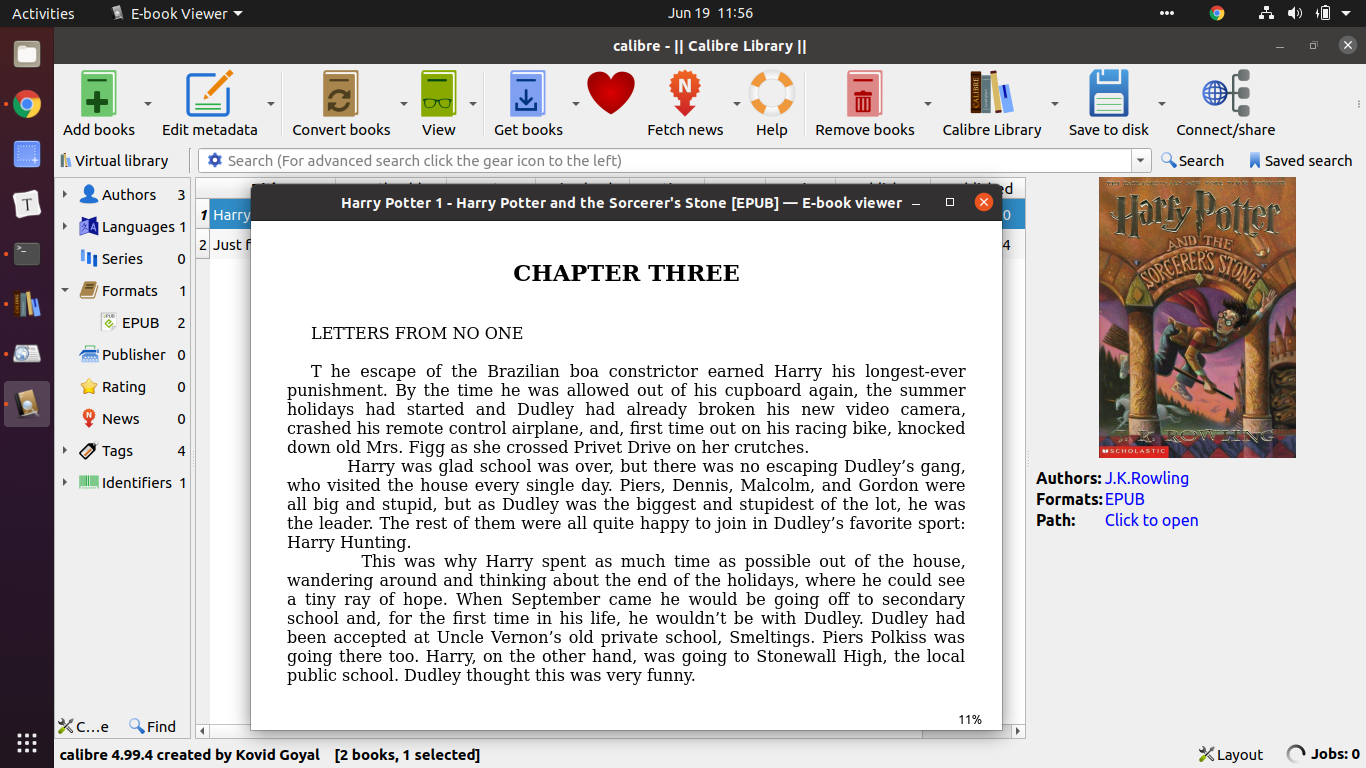
If you use Linux, you may have heard of this powerful and easy-to-use e-book manager. Calibre is a free and cross-platform application that offers a complete e-book solution. You can use Calibre to view, convert, edit, and create e-book catalogs in all major e-book formats.
Features of Calibre:
- E-book catalog
- Edit book metadata
- Download news/magazines from the web
- Library share and backup
- Connect to other e-book reader devices
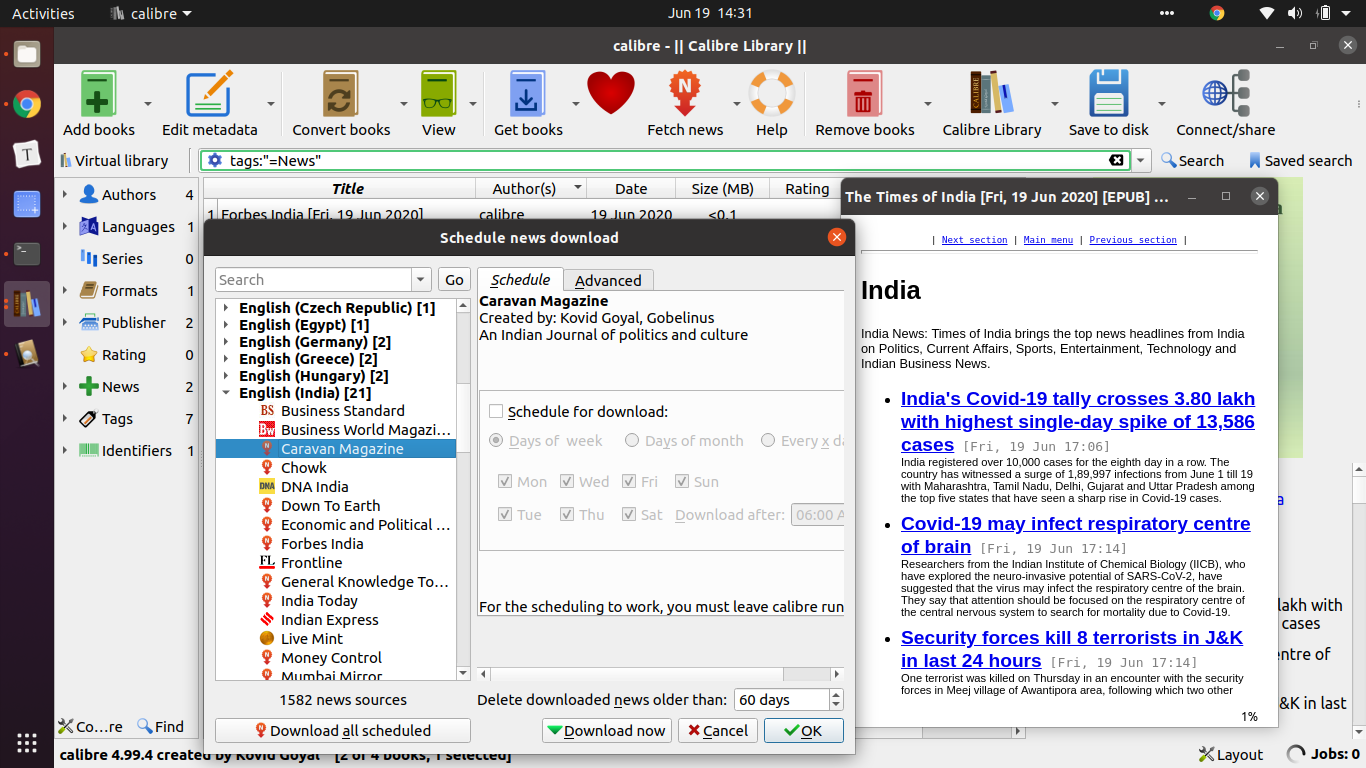
Beyond normal e-book reading and editing, Calibre also lets you download newspapers and magazines from popular news sources of various countries. Moreover, you can convert them into e-books for convenient reading.
Calibre alternatives at a glance:
- Okular
- Foliate
- Bookworm
How To Install Calibre?
Being a popular app, Calibre is available to install directly from your Linux distro’s local repository. However, Calibre discourages downloading packages provided by your distribution because it might often buggy/outdated.
Hence, you can use the Binary installation as described here.
Or, if you have a universal Flatpak packaging system, run the command:
flatpak install flathub com.calibre_ebook.calibre
7. VSCode — Free Code Editor
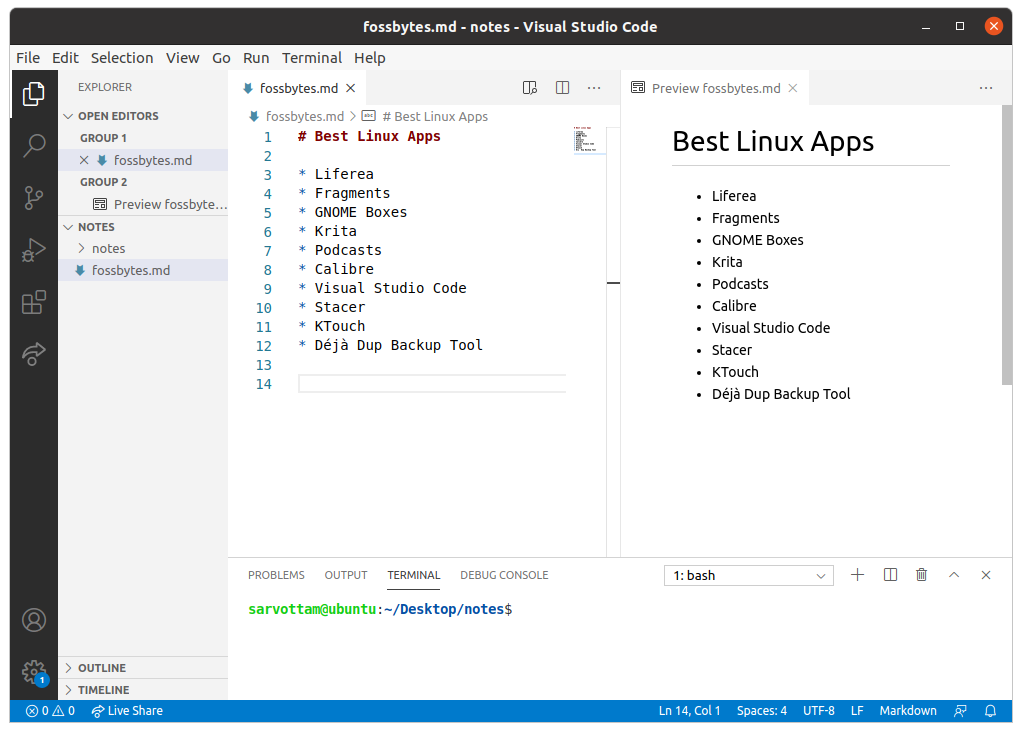
Visual Studio Code is a simple source code editor with tons of powerful tools for software development and deployment. It is one of the best Linux apps for editing text in any programming langauge. VSCode also has built-in integration with Git version control system, Debugger, terminal, and other programming languages specific extension.
Features of Visual Studio Code:
- Built-in command line interface
- Git and terminal integration
- Debugging
- Real-time Live code sharing
- Layout and theme customization
- Extension and Plugins
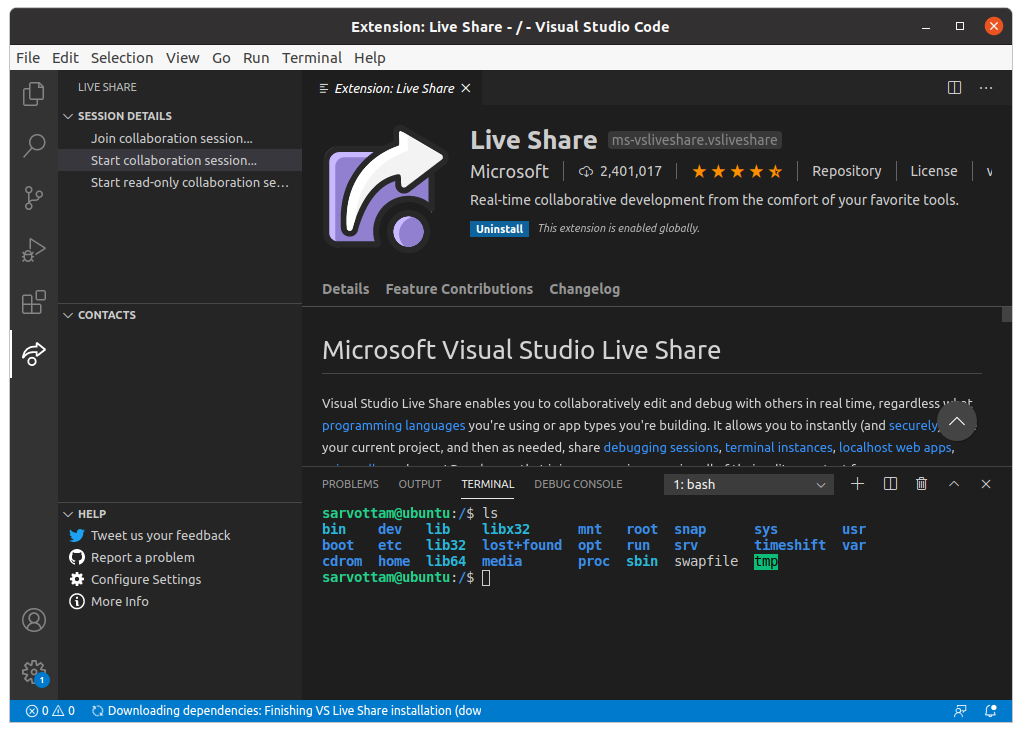
The best part of VSCode is several extensions and customization options. You can install any extension to add new language syntax highlighter or snippet, themes, debuggers, and to connect to additional services like Live code sharing.
Visual Studio Code alternatives at a glance:
- Atom
- Sublime Text
- Brackets
How To Install VSCode?
You can download and install the Visual Studio Code in many ways. First, you can download the Linux distribution-specific package from here and install it by running the command:
sudo dpkg -i <filename>.deb
Second, from the Ubuntu snap store or CLI snap command:
sudo snap install code --classic
Or last, from Flathub using Flatpak:
flatpak install flathub com.visualstudio.code
8. Stacer — Linux System Optimizer
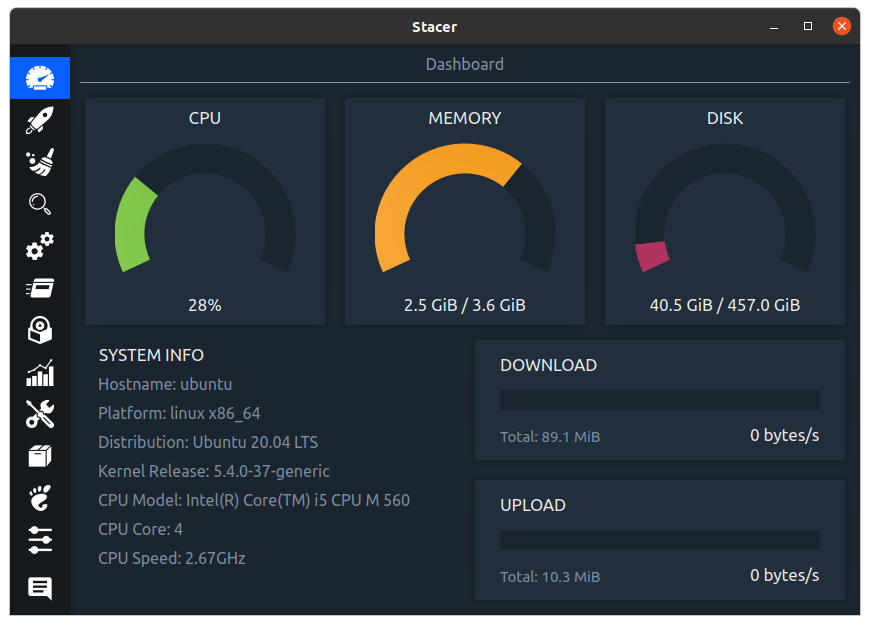
Stacer is truly the most beautiful free and open-source application for Linux system optimizing and monitoring. You can use Stacer to view and manage different aspects of your entire system. This includes startup apps, logs files, caches, services, processes, respiratory, settings, and more.
Features of Stacer:
- Beautiful user interface
- All system information
- Repository manager
- System cleaner
- Package uninstaller
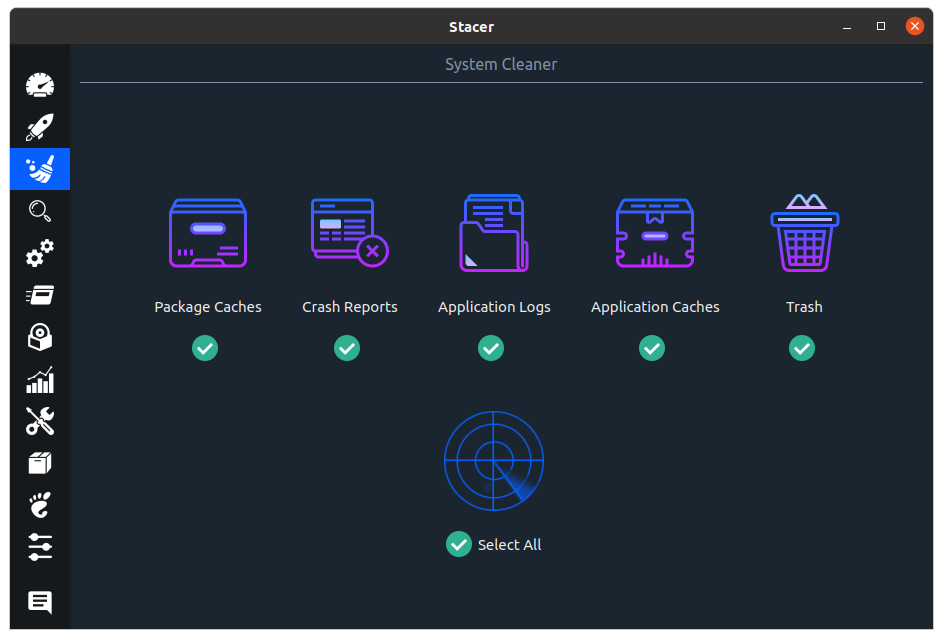
If you’re not a terminal fan, Stacer is a must-have application for you. It not only lets you view all your system information, but also lets you customize any feature in one click.
Stacer alternatives at a glance:
- BleachBit
- CCleaner
- Htop
How To Install Stacer?
Many Linux distributions like Ubuntu and Fedora already contain Stacer in the local repository. To install it, run the command:
For Debian sid or Ubuntu 20.04+:
sudo apt install stacer
On or before Ubuntu 19.10:
sudo add-apt-repository ppa:oguzhaninan/stacer sudo apt-get update sudo apt-get install stacer
For Fedora (with DNF):
sudo dnf install stacer
For other Linux distros, you can also download the .deb, .rpm or AppImage package of Stacer from here.
9. KTouch —Typing Tutor
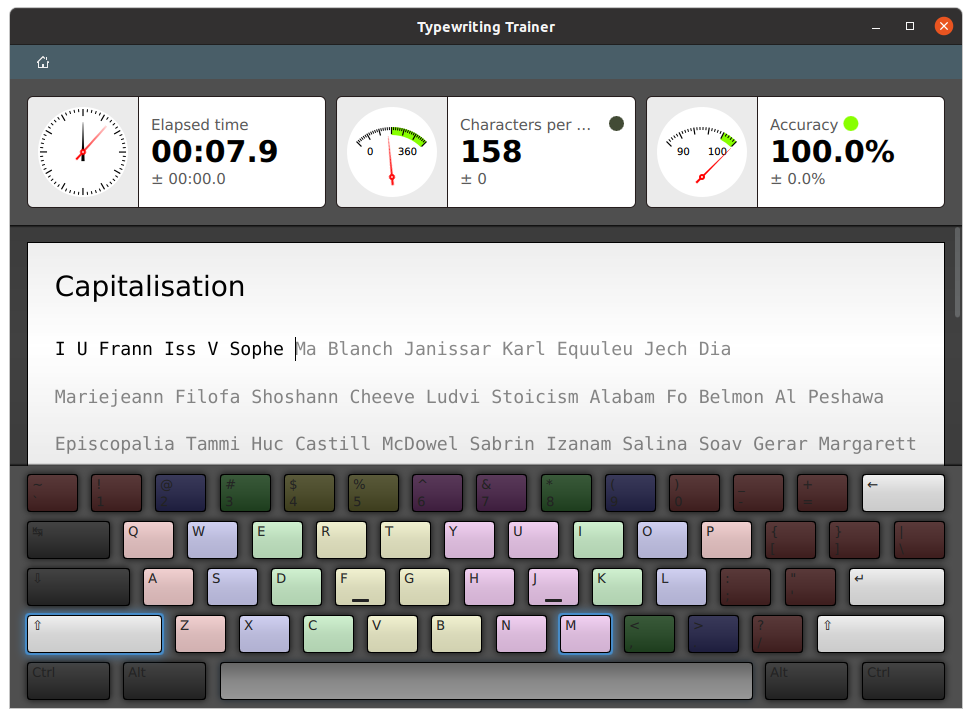
If you’re looking to improve your typing speed, KTouch is a way to go. It is a simple and free touch typing application for the Linux platform that provides you with text to train on and gives performance results. You also don’t need to search for keys on your keyboard as KTouch already displays Keyboard on screen.
Features of KTouch:
- Simple and beautiful user interface
- Typewriter Trainer
- Custom lessons
- Several language support
- On-screen Keyboard displays
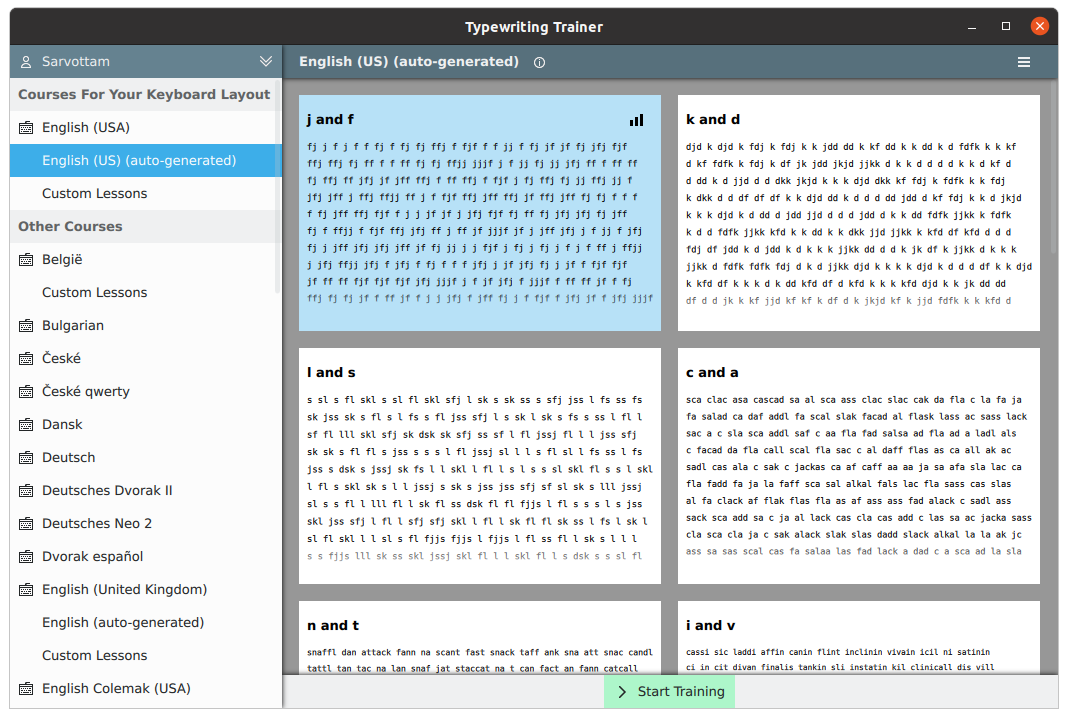
KTouch also displays the key you have to press next with the correct fingers. If you’re not comfortable with the keyboard layout, you can change it as well. Once you finish training, KTouch gives you comprehensive statistical information to analyze your progress.
KTouch alternatives at a glance:
- Klavaro
- TIPP10
- Tux Typist
How To Install KTouch?
KTouch is available on both Flathub and Snap repositories. Run the following command to install it using either Snap or Flatpak.
flatpak install flathub org.kde.ktouch
or
sudo snap install ktouch
10. Déjà Dup — A Backup Tool
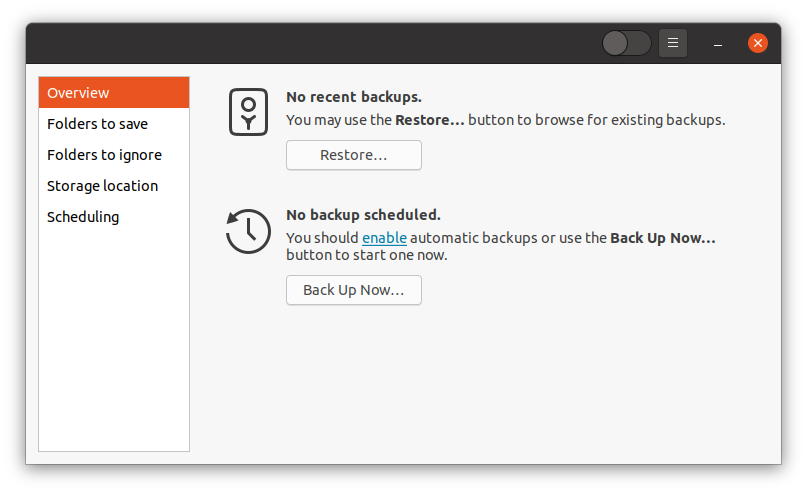
If you’re using Linux, you must at least have a backup tool to save your work for accidental data loss. Déjà Dup (day-ja-doop) is one such Linux application that lets you back up all your data securely. You can either manually fully backup the data or schedule the same process to repeat after a period of time.
Features of Déjà Dup:
- Free and open source
- Support for local, remote, or cloud backup locations such as Google Drive
- Encrypted and compressed data
- Restore from any particular backup point
- Schedule regular backups
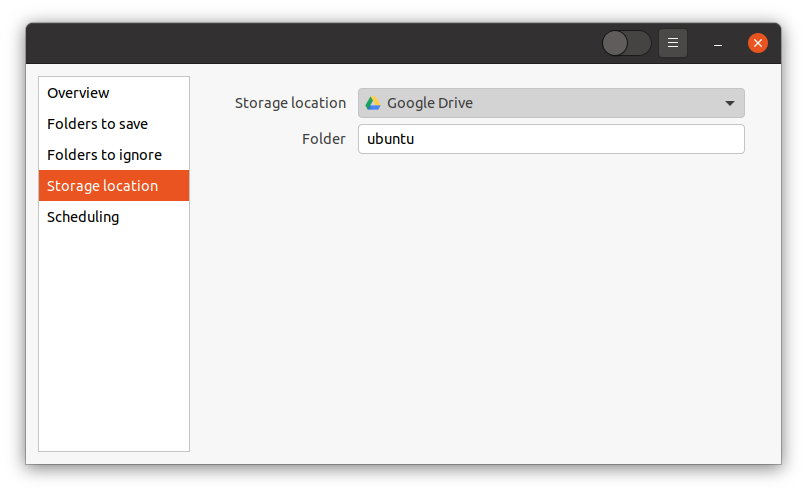
The major advantage of Déjà Dup is multiple storage locations. Instead of a hard drive, you can store all your data on a remote computer or cloud storage like Google Drive.
Déjà Dup alternatives at a glance:
- Rsync
- Timeshift
- Bacula
How To Install Déjà Dup?
Déjà Dup is also available on both Flathub and Snap. Run the following command to install it using either Flatpak or Snap:
flatpak install flathub org.gnome.DejaDup
or
sudo snap install deja-dup --classic
Final Words
I hope this list of best Linux apps will make your every day more productive and fun. If you find any difficulty while installing it using the default package manager, I would highly recommend going for universal package managers like Snap and Flaptak that support almost all Linux distros.
Linux apps are not limited to a single Linux distribution — thanks to universal package managers that have now revolutionized the delivery and installation of Linux applications on any Linux distro.
Which Linux app do you use every day? Do comment and share your experience to let all of us know about other unknown Linux apps.
The post 10 Best Linux Apps You Must Have For Everyday Use [2020 Edition] appeared first on Fossbytes.